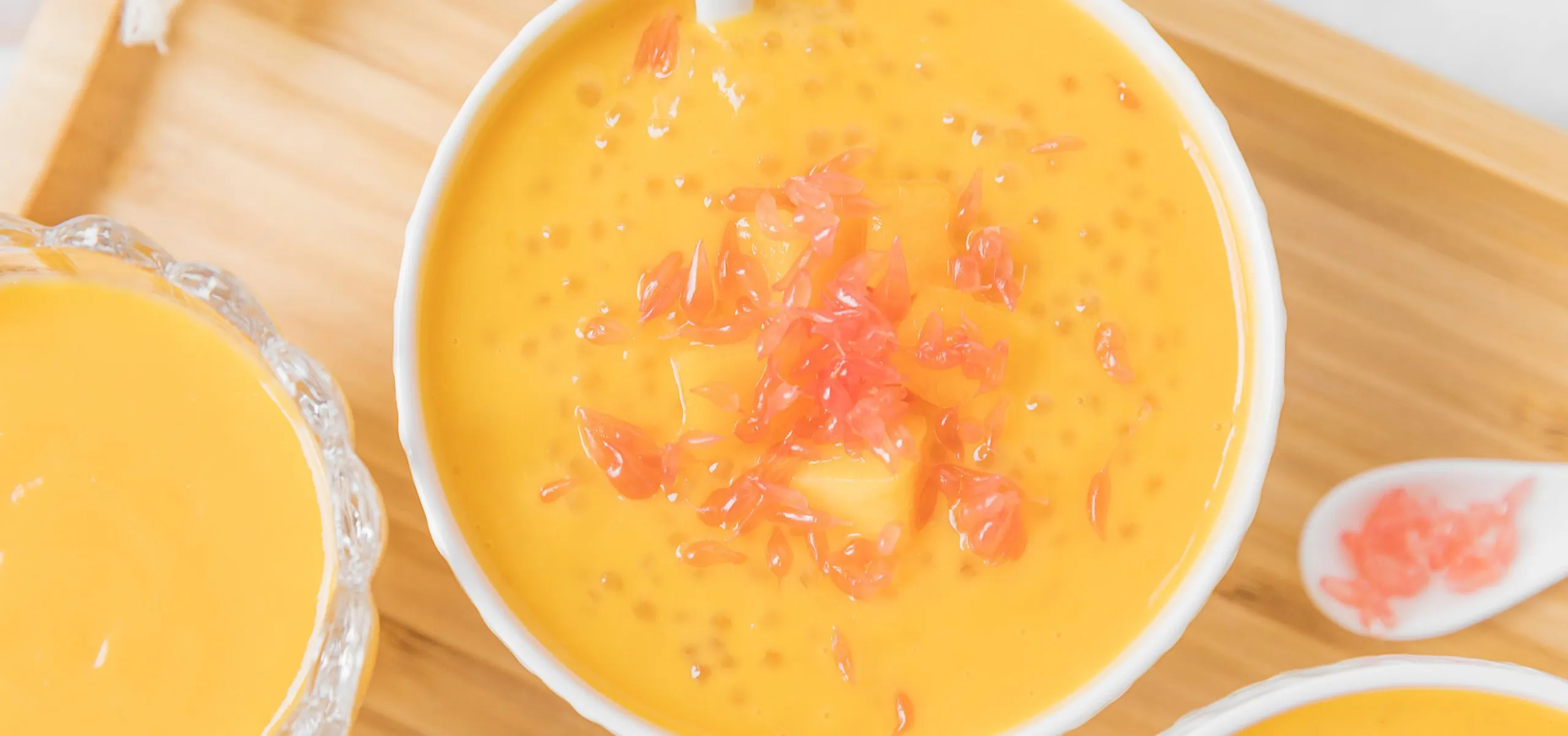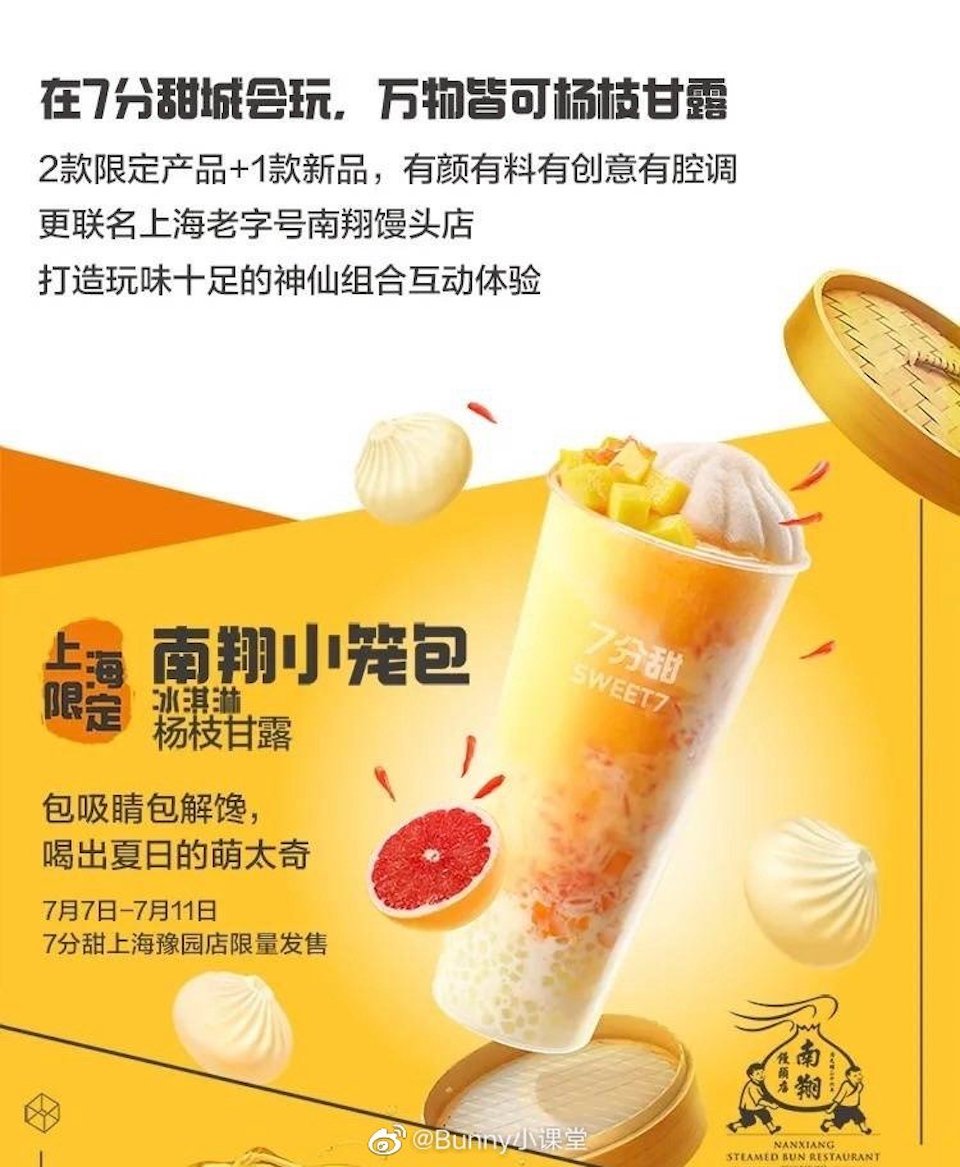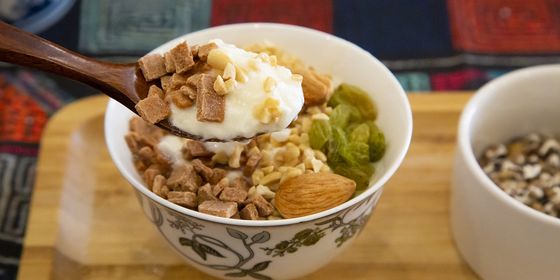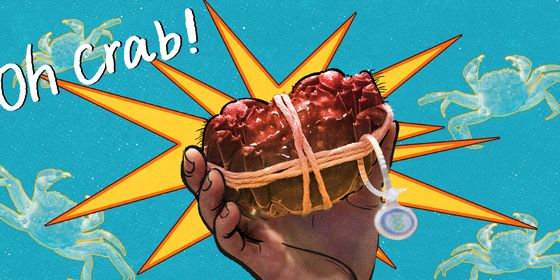Learn how to make the ‘Sweet Dew of the Willow Branch,' a delicious sweet summer treat
In summer 1984, the chefs at the famous Hong Kong restaurant Lei Garden began experimenting in an attempt to create a new dish for the steamy hot summer months. By combining mango, pomelo, sago, and coconut milk they eventually created what is now a classic soupy summer treat found all over China. But the dessert, known provisionally as “pomelo mango sago,” failed to stand out against Hong Kong’s other liquid sweet treats, like sago and red bean soup (红豆西米露), or mango cream jelly (芒果凉粉). And so, the quest for a more attractive name began.
The story goes that the manager of the restaurant one day came across a story describing how the Guanyin Bodhisattva once collected the sweet dew (甘露) from a willow branch in her magic Vase of Mutton-Fat Jade (羊脂玉净瓶) to save people suffering because of a drought. “Sweet dew” worked perfectly as a poetic description of the dessert’s miraculous ability to quench people’s thirst and help them feel refreshed on a hot day. The manager bestowed the dessert the same name as the Guanyin Bodhisattva’s magical liquid: “Sweet Dew of the Willow Branch (杨枝甘露).”
Sweet Dew of the Willow Branch is associated with the Chinese classic Journey to the West, which helped boost the appeal of Lei Garden’s new dessert. In a popular scene of the legendary tale, Monkey King Sun Wukong destroys a mythological ginseng fruit tree belonging to a powerful god. The tree produced only 30 fruits every 10,000 years, which granted the power of immortality to any who ate them. The tree’s powerful god owner ordered Sun to bring the tree back to life, and he turned to the Guanyin Boddhisatva for help.
The Guanyin Boddhisatva came to the tree together with Sun and sprinkled a little bit of dew from her Vase of Mutton-Fat Jade onto the withered tree, and it suddenly came back to life. The plot line has been immortalized in the many TV adaptations of Journey to the West, and according to folk belief, the term Sweet Dew of the Willow Branch represents auspiciousness and good luck.
With the new name, the Sweet Dew of the Willow Branch dish quickly gained popularity in Hong Kong, with large dessert restaurant chains like Hui Lau Shan and Honeymoon Dessert producing their own versions using different fruits and toppings. As these dessert chains forged their way into the Chinese mainland in the 21st century, they brought Sweet Dew of the Willow Branch with them. Milk tea shops began to boom and started offering the delicious fruity dessert too.
But one large challenge remained. Because it required a bowl and spoon to eat, Sweet Dew of the Willow Branch was inconvenient as a takeaway snack. In 2007, Xie Huancheng, the founder of dessert brand Sweetseven, attempted to solve the issue by selling the dessert in a cup, but with a spoon still necessary to dig into the yoghurt-like texture and fleshy mango cubes. “I realized that as long as we couldn’t liberate the other hand of the customer, it wasn’t really ‘cupped’ Sweet Dew of the Willow Branch,” Xie told Jiemian in 2019.
In the following few years, Xie and his team gradually worked to make the dessert more “drinkable,” slicing the mango into smaller chunks, adding more milk and water, and serving it with larger straws. Sweet Dew of the Willow Branch owes much of its vast popularity to its transformation into a drink. Now it’s a common takeout beverage consumed through a straw, rather than the sit-down dessert it started out as. Nowadays, go into any milk tea shop on a Chinese street and you may well find Sweet Dew of the Willow Branch on the menu. Or why not make one yourself, with our simple recipe:
Ingredients:
40g sago
2 ripe mangoes,
4 tbsp coconut milk
3 tbsp milk
40g grapefruit (or pomelo)
Steps:
- Boil a pot of water, add the sago. Cover the pot and cook over a low heat until the sago becomes transparent.
- Remove the pot from the heat andset aside for around 15 minutes with the lid covered. Then drain sago and rinse well under cold water.
- Cut the flesh of the mangoes into cubes. Put three-quarters of the cubes into a blender, add milk and coconut milk, and blend them into puree. Add sugar to taste.
- Peel the grapefruit, separate out the pulp and cut the flesh into small cubes.
- Put the puree into the fridge for 15 minutes. Then, pour it into bowl. Add the remaining one-quarter of the mango cubes, the grapefruit and sago on top of it.
Enjoy!














